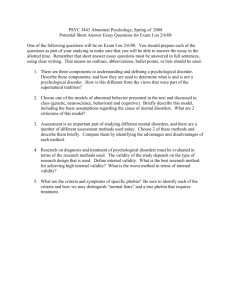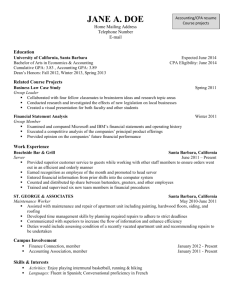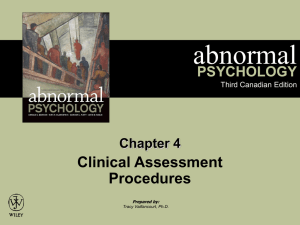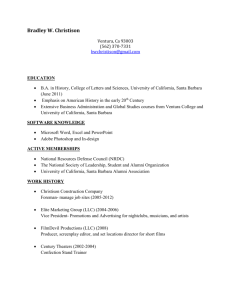IRB draft (new window)
advertisement
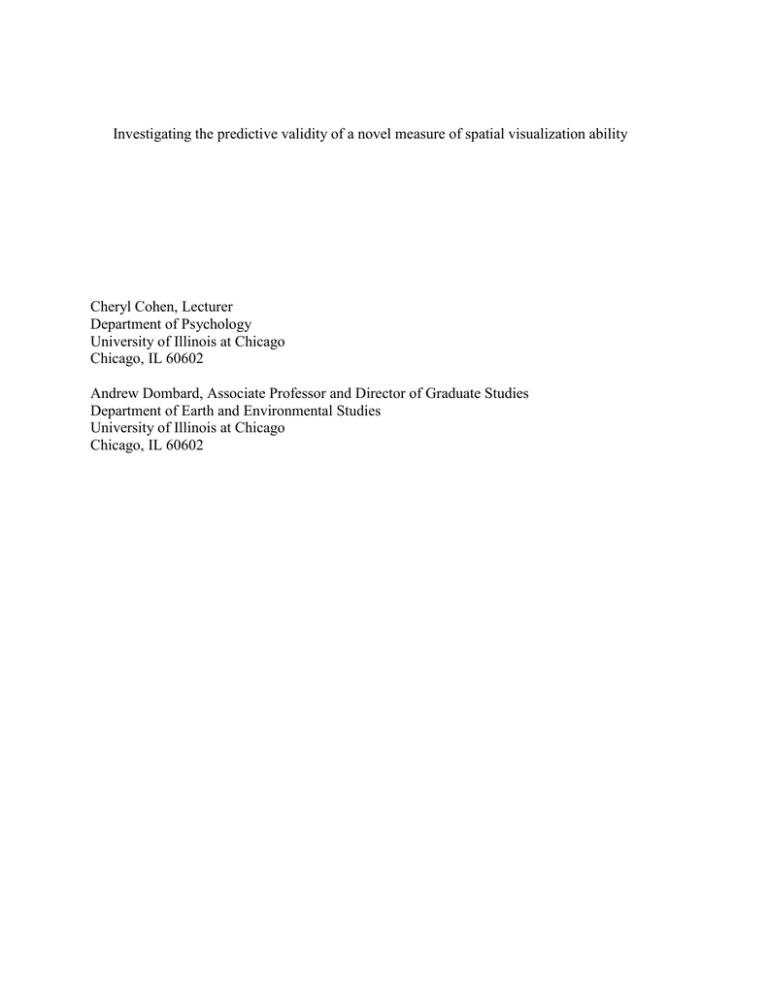
Investigating the predictive validity of a novel measure of spatial visualization ability Cheryl Cohen, Lecturer Department of Psychology University of Illinois at Chicago Chicago, IL 60602 Andrew Dombard, Associate Professor and Director of Graduate Studies Department of Earth and Environmental Studies University of Illinois at Chicago Chicago, IL 60602 1. Study Hypothesis and Specific Aims (purpose, objectives) The purpose of this study is to establish the predictive validity of a novel 30-item multiple choice measure (the Santa Barbara Solids Test) in predicting performance on tasks that require the ability to identify the cross section of a three-dimensional object. The hypothesis is that there will be a significant positive correlation between performance on the Santa Barbara Solids Test and the criterion measure, (performance bon geological blocks test, as presented in Geology____). The target population is students enrolled in introductory structural geology class (course number) 2. Background and Significance The Santa Barbara Solids Test is a 30-item multiple choice test that measures individual differences in ability to identify the two-dimensional cross section of a three-dimensional geometric solid, a skill that has been identified as important in science, technology, engineering and mathematics (STEM) fields. Test items varied along two scales: complexity of the geometric solid to be sliced and orientation of the cutting plane. Internal reliability of both the overall test and its subscales was satisfactory. Bivariate and partial correlations suggest that the test measures a skill that is distinct from three-dimensional mental rotation and change in view perspective (Cohen & Hegarty, 2012). (discuss populations) The test shows promise for online administration and for adaptation to younger populations. Cohen & Hegarty (2007; 2012) established that the Santa Barbara Solids Test has satisfactory internal reliability. Establishing the predictive validity of this measure would expand the application of the test. Testing this sample population on performance on geoblocks would provide a measure of ecologically validity. 3. Methods a. Research Design The study is intended to be a correlational study. Correlational study. b. Eligibility Criteria The sample population will consist of student enrolled in introductory geology class (name of class) at UIC. c. Justification for inclusion of any special or vulnerable populations d. Plans for subject selection, recruitment, and documentation of informed consent Students will be e. Description of Procedures f. Statistical Methods i. Planned statistical analysis ii. Rationale for selection of subject g. Safety Monitoring and Assessment (if relevant, include provisions for managing adverse reactions) h. Data management (when relevant, address measures of privacy protection, coding, storage of information) 4. For multi-site protocols, an overall study management plan should be provided. 1. ^ Cronbach, L.J., & Meehl, P.E. (1955). Construct validity for psychological tests. Psychological Bulletin, 52, 281-302.[1] 2. ^ The Marketing Accountability Standards Board (MASB) endorses this definition as part of its ongoing Common Language: Marketing Activities and Metrics Project. 3. ^ American Educational Research Association, American Psychological Association, & National Council on Measurement in Education. (1999). Standards for educational and psychological testing. Washington, DC: American Educational Research Association. 4. ^ Messick, S. (1995). Validity of psychological assessment: Validation of inferences from persons’ responses and performances as scientific inquiry into score meaning. American Psychologist, 50, 741-749.


